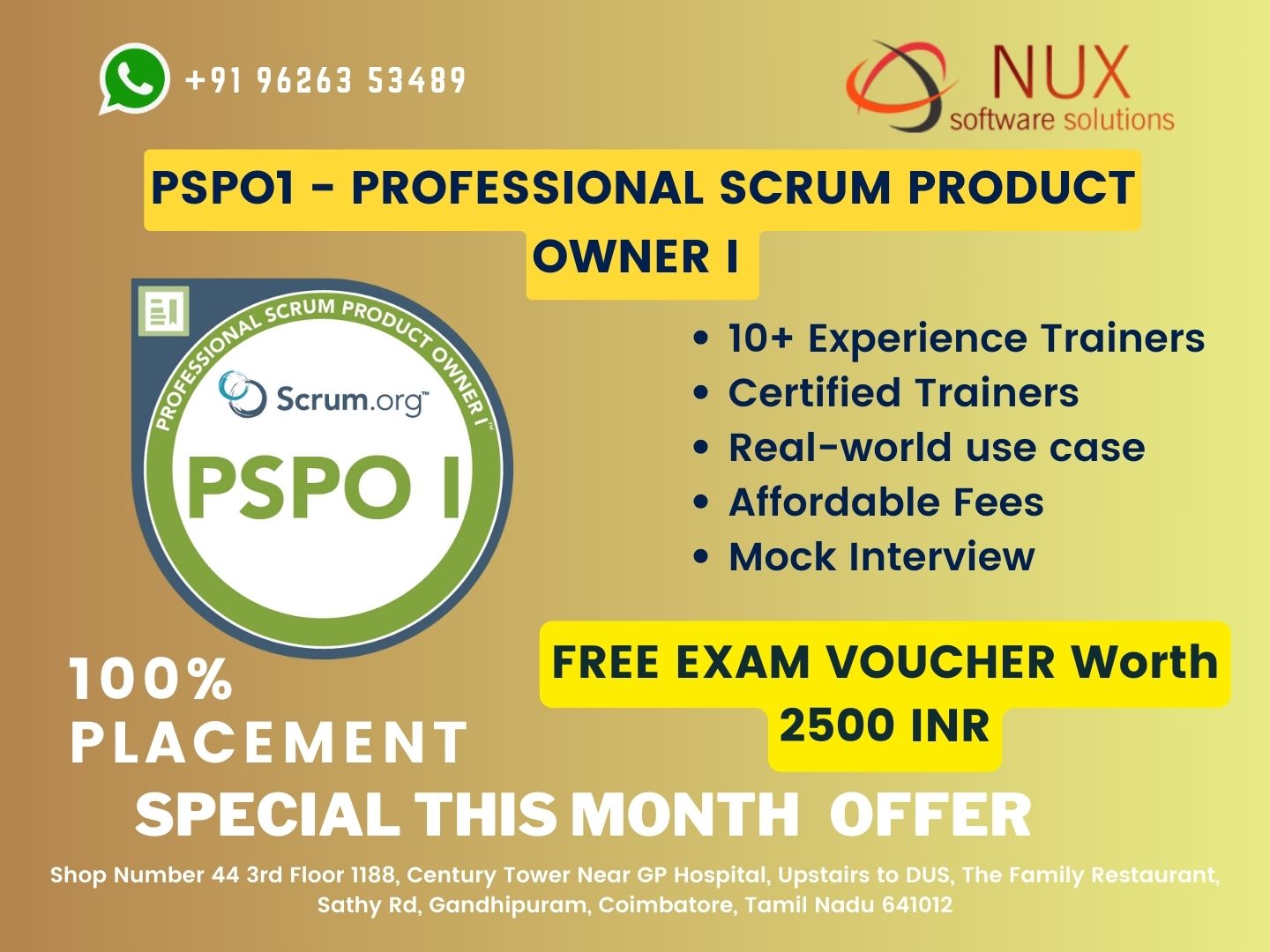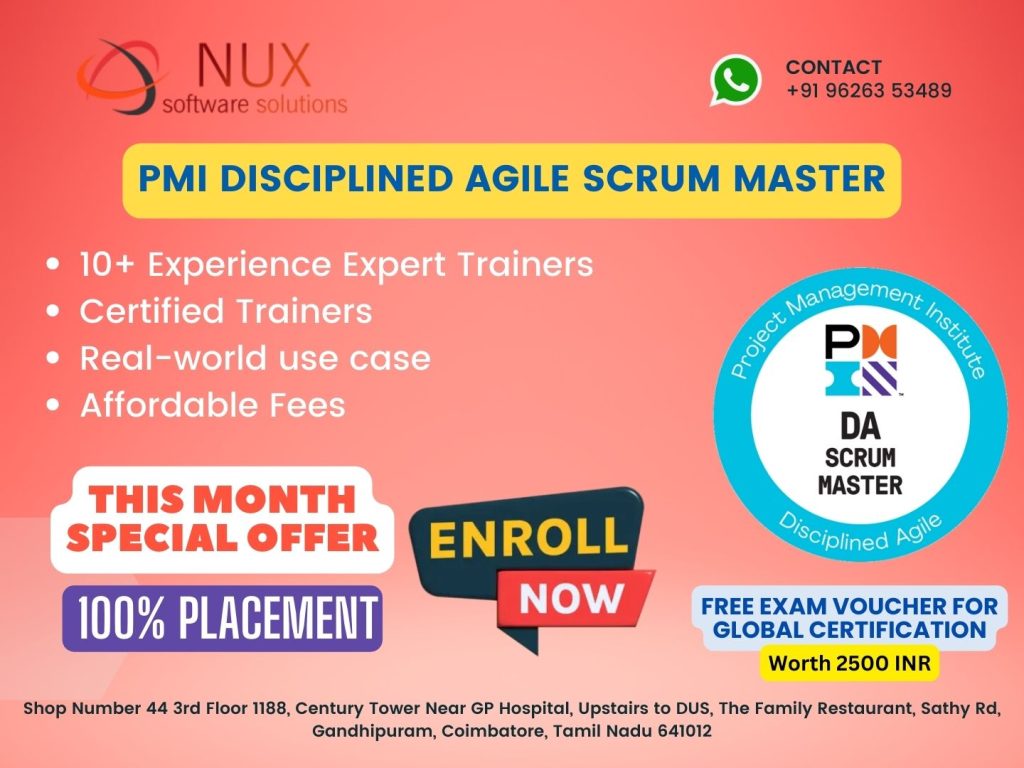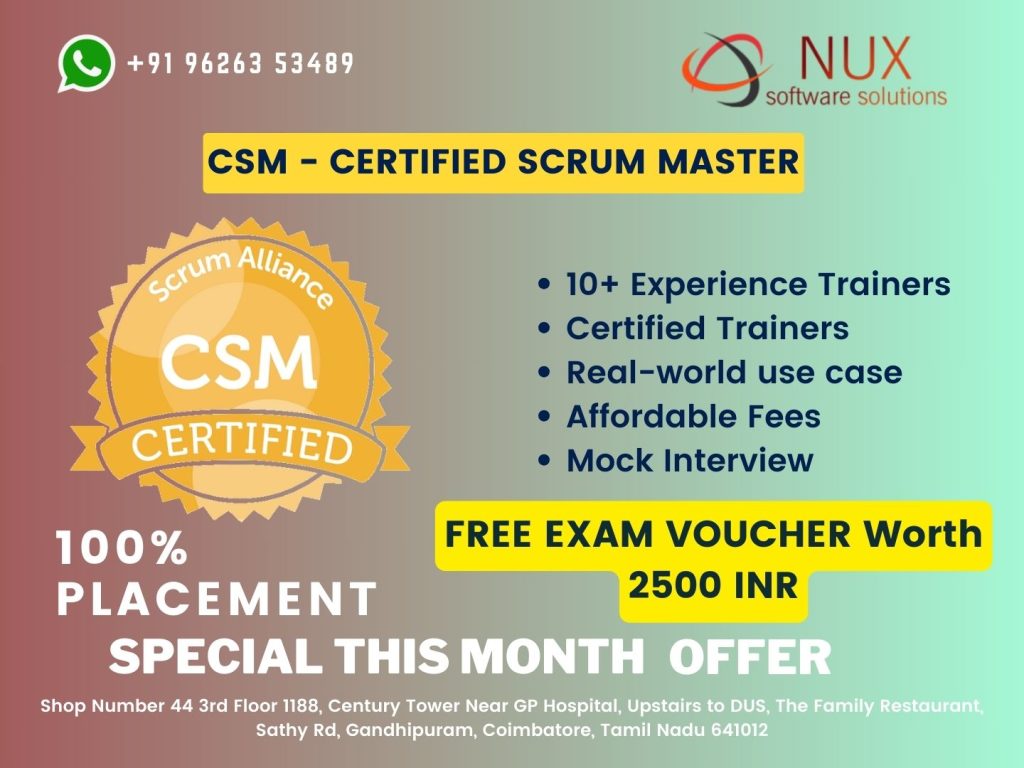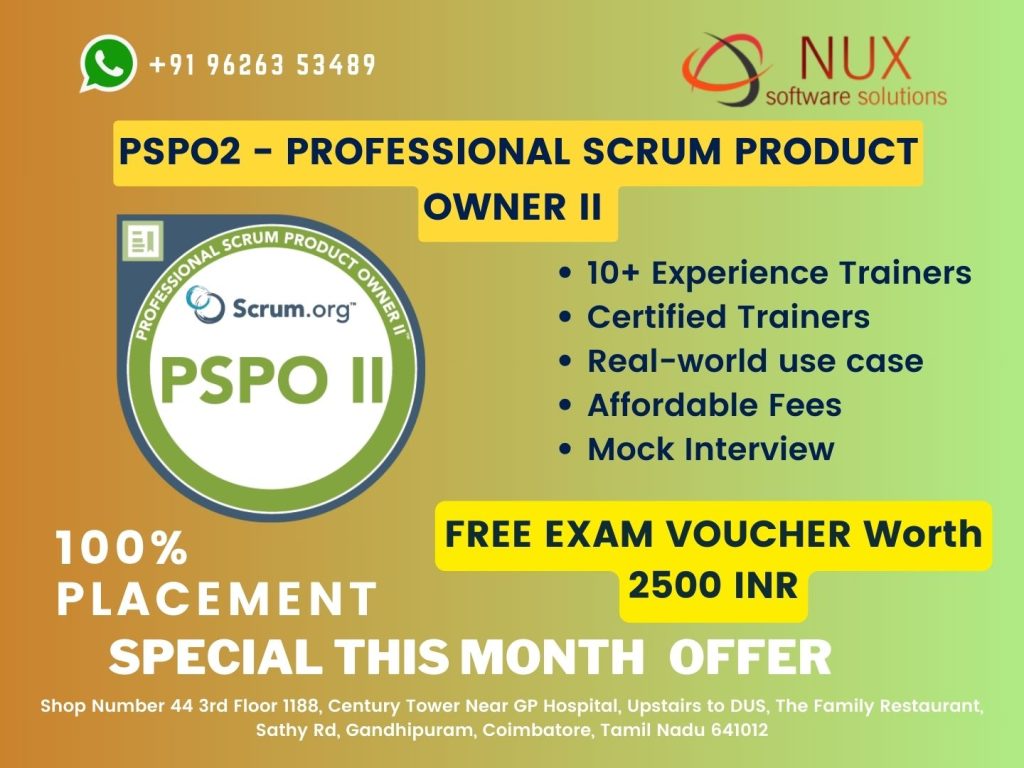Professional Scrum Product Owner I

Course Overview
The Professional Scrum Product Owner I (PSPO I) training is designed to develop the capabilities of individuals responsible for maximizing product value in Scrum-based environments. Aligned with Scrum.org standards, this course covers the core principles of agile product management, stakeholder collaboration, and value-driven decision making.
Participants will gain a deep understanding of the Product Owner’s role, responsibilities, and practices within a Scrum Team, along with techniques for managing product backlogs, aligning with customer needs, and delivering outcomes—not just outputs.
Why Choose This Course
Understand how to drive maximum value delivery through agile product ownership
Learn from real-world examples how to collaborate with stakeholders and developers
Align with the globally respected Scrum.org PSPO I certification framework
Build confidence to manage product vision, backlog, and business value prioritization
Prepare for Scrum Master or Agile Product Manager roles in any domain
Who Should Enroll
Aspiring or current Product Owners in Scrum teams
Business Analysts, Project Managers, or Product Managers transitioning to agile roles
Professionals working in Agile, Scrum, or product-led development environments
Stakeholders or leaders involved in product strategy, delivery, or growth
Anyone aiming to take the PSPO I certification exam from Scrum.org
Skills You Will Gain
Deep understanding of the Product Owner’s accountability and decision-making scope
Techniques for value-driven backlog management and incremental delivery
Knowledge of Scrum theory, events, roles, and rules in real-world product development
Capability to engage with customers and stakeholders to maximize ROI
Exam readiness for the Scrum.org PSPO I certification
Career Opportunities
Scrum Product Owner
Agile Product Manager
Business Analyst (Agile Teams)
Scrum Team Stakeholder or Proxy Product Owner
Product Strategist or Feature Owner
Professionals with PSPO certification are highly sought after in tech, finance, healthcare, retail, and government sectors where agile adoption is accelerating.
Be the Voice of Value in Your Scrum Team
Product Owners are at the heart of delivering business value in agile environments. With this course, you’ll gain the skills to define product goals, optimize team efforts, and guide outcomes that matter.
Enroll Now in PSPO I Training at Linux Training Center, Coimbatore
Professional Scrum Product Owner I Syllabus
Modules
Understanding and Applying the Scrum Framework
Empiricism
- In Scrum, empiricism refers to the idea that solving complex problems, or doing complex work, can only be done using an exploratory process rather than relying on predetermined plans.
- Learn about empiricism and complex work.
- Explore why trust is important for empiricism to thrive.
The Scrum Values
- For agility to thrive, the culture of the organization must support the fundamental concepts of agility.
- The Scrum Values - Focus, Respect, Openness, Commitment, and Courage - create an environment where empiricism, self-management, and continual improvement are more successful.
The Scrum Team
- The Scrum Team is a small unit of professionals focused on attaining the Product Goal.
- Scrum Teams consist of a Product Owner, Scrum Master, and Developers. Each has a clear set of accountabilities.
- Learn more about the Scrum Team, accountabilities, responsibilities, and why these aren’t called “roles.”
The Scrum Events
- The five Scrum Events provide regular opportunities for enacting the Scrum pillars of Inspection, Adaptation, and Transparency.
- They help teams keep aligned with the Sprint and Product Goals, improve Developer productivity, remove impediments, and reduce the need to schedule too many additional meetings.
The Scrum Artifacts
- Learn about the three Scrum artifacts and their commitments: Product Backlog and Product Goal; Sprint Backlog and Sprint Goal; Increment and Definition of Done.
- Explore some common antipatterns and myths that surround these artifacts.
Definition of Done
- The Definition of Done describes the quality standards for the Increment.
- Learn why getting to Done is so important, what undone work is, if it’s okay to show work that isn’t done to stakeholders, can you present undone work at the Sprint Review, and what’s the difference between the DoD and Definition of Ready or acceptance criteria.
Developing People and Teams
Self-Managing Teams
- The best way to support a team working on complex problems is to give them the space to determine how to do their work, rather than directing them.
- Learn about self-managing teams and their characteristics.
- Explore some myths and misunderstandings about self-management.
Leadership Styles
- The ways that leaders present themselves and interact with their colleagues can either support agility, or defeat it.
- Learn the difference between leaders and managers and the traits of an agile leadership style.
- Explore why we speak more about agile leadership and not servant leadership.
Facilitation
- Facilitation can be used to lead people toward agreed-upon objectives in a manner that encourages participation, ownership, and creativity by all involved.
- Learn about the principles of facilitation, skills and traits of a facilitator, how to facilitate diverse perspectives, and explore some facilitation techniques for the Scrum Events.
Coaching
- The coach’s job is to be a process expert, enabling those they are coaching to achieve their goals using skills such as developmental conversations, active listening, and asking thought-provoking questions.
- Learn a few of the coaching principles, traits and skills of a coach, and why coaching is beneficial for Scrum Teams.
Teaching
- Anyone can act as a teacher, helping your colleagues obtain new knowledge or learn new skills.
- If you want to become a very effective teacher, it’s best if you learn a few of the principles of the teaching profession, the skills and traits of a teacher, and when teaching can be helpful for a Scrum Team.
Mentoring
- Mentoring is a mutually beneficial relationship in which a mentor provides guidance to a mentee to help the mentee reach their goals. It’s often confused with coaching.
- Learn why mentoring is beneficial for Scrum Team, mentoring principles, skills and traits of a mentor as well as the traits of a mentee.
Managing Products with Agility
Forecasting and Release Planning
- Scrum Team can use forecasting and release planning as a guide for delivering a product through small incremental and frequent releases rather than big bang product launches.
Product Vision
- The Product Vision describes the purpose of a Product.
- A good Product Vision expresses the value the Product should deliver and to whom that value is delivered.
Product Value
- The objective of a Scrum Team is to deliver value to customers and stakeholders.
- Product Value actively drives customer satisfaction, loyalty, brand reputation, and the longevity of a business by providing customers with benefits that satisfy their needs.
Product Backlog Management
- Product Backlog Management is the act of adjusting and ordering items on the Product Backlog so that the Scrum Team can deliver the most valuable product possible. This learning series explores Product Backlog Management.
Business Strategy
- Business strategy is informed by the company’s mission and vision, and in turn informs individual product visions.
- An organization inspects and adapts its business strategy based on feedback gathered from delivering product Increments.
Stakeholders and Customers
- Scrum encourages frequent collaboration with stakeholders, and customers in particular.
- Understanding how to identify and learn about the challenges that key stakeholders face will help the Scrum Team better deliver the value they are seeking.



